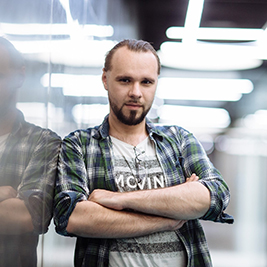Bank of Portraits / Karpuk Anton and Lukera

Karpuk Anton and Lukera
Anton Karpuk and his sister Lukera lived in the hamlet near the village of Hodovychi in Volhynia. In the period of the German-Soviet war, this region, as well as the rest of Ukraine, was occupied by the Nazis and affected by the Holocaust crimes. Their victims were almost all members of the local large Jewish community.
In the interwar period, the region belonged to Poland and was called the Volhynian Voivodeship. Over 205,000 of its 2-million population were the Jews, which means each tenth resident. In 1939 – 1940, when Vohlynia was annexed to the UkrSSR, the local Jewish community increased due to absorption of the numerous refugees from the Polish lands occupied by the Wehrmacht.
The city of Lutsk was taken by the Nazis in the evening of June 25, 1941, one of the first occupied cities of Ukraine. Shortly after that, the first anti-Jewish actions started. In late June – early July, nearly 1,500 Jewish citizens were shot dead by the Sonderkommando 4-A in Lubart's Castle.
In the autumn, the ghetto for the Jews from Lutsk and the outskirts was established in the midtown. By its liquidation in December 1943, up to 25,000 persons had been there. The ghettos existed in other settlements, in particular, Volodymyr-Volynskyi, Berestechko, Horokhiv, Kamin-Kashyrskyi.
The prisoners had to wear the marking sign on the clothing in the form of the yellow Star of David, pay “contributions” in money, jewels, clothes and property. The qualified specialists and workers were forced to work for the occupiers. The rest of the work-capable people performed hard or humiliative work. Those selected as incapable for work by the Nazis were taken to the previously prepared burial sites and shot dead. During the ghetto liquidation, the qualified specialists and workers were exterminated in the same places. In Volhynia, the mass execution sites were the village of Hirka Polonka, town of Dubno, villages of Okunyn, Lukiv and Turiysk.
The village of Hodovychi, in the hamlet next to which Anton Karpuk lived, was located near the villages of Lukiv and Okunyn. In late June 1941, the Jewish woman Bluma Kletz was near his house. Her husband died as a result of the German-organized pogrom, but the woman was fortunate to escape and save her four children: Rosa, Leonid, Mendele and Itzele.
Anton prepared the hideout in the barn for the escapees. He made a special tunnel between the hideout and the cattle shed, covering it with hay and manure. Except his sister Lukera, nobody knew about the Jews. Bluma and her children stayed in the hideout almost all the time. The house owner brought them food personally. These strict conspiracy measures helped the Kletz family to survive the long time. However, the accident put them on the brink of death again. One summer day in 1943, when Anton was out, Bluma and Roza had to leave the shelter and take the food for them. They did not know that the police were in the hamlet.
The woman and her daughter were arrested and sent to the village of Lukiv. Anton was arrested as well. He was kept in prison for two weeks. All this time, understanding that the destiny of Leonid, Mendele and Itzele depended on his testimonies, he denied his connection to two Jewish women in the house. He said that they roamed there accidentally, probably, in the search of food.
Therefore, Lukera Karpuk had to take care of Leonid and his brothers. After release, Anton did not dare to continue harboring the Jews, so he agreed with his neighbor to hide them. However, one month later, police came to the hamlet again. Leonid’s brothers were discovered. In a few days, the boys and the woman, who hid them, were executed in the village of Lukiv. Leonid survived accidentally: he took the cattle to the pasture.
The boy did not dare to come back to the hamlet. He roamed in the woods for some period and then joined the partisan unit. In its rows he fought against the Nazis until their expulsion from the region in 1944. After the war, Leonid Kletz lived in Russia. He did not forget his saviors and kept in touch with them.
On January 10, 1999, Anton and Lukera Karpuk were honored as the Righteous Among the Nations.

Maksym Milevskyi
Kyiv
National Museum of the History of Ukraine in the Second World War
-
fingerprintArtefacts
-
theatersVideo
-
subjectLibrary
